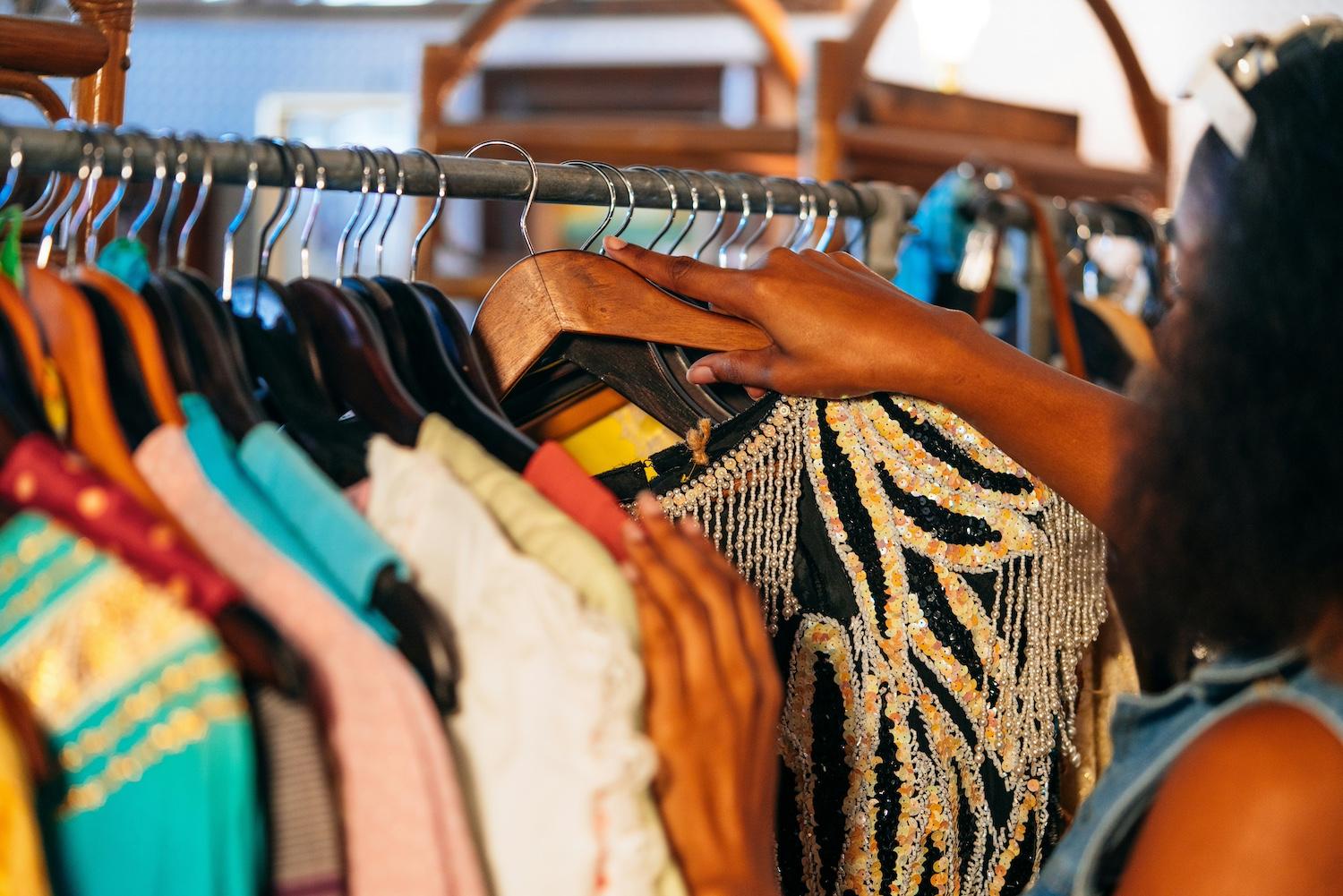
(Image: THEFUNKSHIP/Unsplash)
The tariffs imposed by United States President Donald Trump on imports from Canada and Mexico, primarily a 25 percent increase, shocked the world and left a myriad of markets and industries confused about how to continue operating. Retaliatory tariffs from the Canadian side of the border, also largely at 25 percent, might mean that resources for making and reselling products imported from the U.S. will also be much more expensive.
The secondhand and vintage clothing market in Canada is no different. Canadian vintage and thrift stores depend heavily on imported U.S. goods to meet public demand, and the new tariffs could drive up prices for buyers. While many consumers opt to buy secondhand and vintage items because it’s more sustainable than buying brand-new clothes, this particular market also depends on offering lower prices than retail stores.
Many thrift stores and vintage shops might also lose clients from the U.S. who purchase their products online, an already large and growing part of the industry, as rising export costs make the end product more expensive. In short, consumers on both sides of the border might be dissuaded from buying into the circular fashion market.
“Higher secondhand prices may push consumers both in Canada and developing countries towards low-cost, resource-intensive, fast fashion,” said Irshad Alimohamed, director of Sinaitex, a secondhand wholesale company that connects businesses with used or surplus goods and suppliers. “Fast fashion uses synthetic materials that take 200 years to decompose. The tariffs do impact this market because it is [usually] lower cost, and people may be pushed towards that direction.”
Many secondhand businesses already feeling the financial strain on the Canadian side of the border are also facing the growing “logistical nightmare” that is selling goods to U.S. customers, Alimohamed said.
“I would say that a lot of the industries in Canada are no longer shipping to the U.S., and that means we don't have enough truckers on the road going across the border,” Alimohamed told TriplePundit. “The few that are out there are increasing their cost, so that is also driving the price up. Now we have the tariffs and the higher cost of transportation to bring the materials to Canada.”
Slower more complicated trade could lead to more textiles and recycled items ending up in landfills, too, Alimohamed said.
“This would risk reversing all the strides that we've made in reducing emissions and waste,” he said. “There's too much waste on both sides of the border. Before the tariffs were in place, we would share our waste with American recyclers, and they would do the same with us here in Canada. That has all ceased, as the costs are too high to bear. Having recycling plants on both sides of the border was very advantageous to us.”
The waste shared between borders in the secondhand industry isn’t exclusively textiles. Cardboard and plastic waste are also affected. Sharing the volume meant the burden was shared, but now Canadian businesses are forced to refocus their recycling efforts into their local communities.
“Having the ability to rework our waste locally has become a priority since the tariffs,” Alimohamed said. “This shift highlights the need for supportive policies to strengthen local sourcing, upcycling, and circular economy initiatives in Canada.”
Losses in the industry should not be downplayed, but the imposition of the tariffs also revealed how the Canadian government — and many others that frequently trade with the U.S. — have neglected policies that incentivize local recycling and upcycling. “Investment in local upcycling can turn this challenge into a climate opportunity,” Alimohamed said.
Initiatives like Sinaitex's Re-Life, a Toronto-based vintage shop that refurbishes old items, should be incentivized by local policy to ensure public interest in sustainable fashion, Alimohamed said.
“Receiving government support on these initiatives would go a long way to ensuring the new generation continues to think sustainably,” he said. “We have a lot of creative geniuses who make one-off pieces out of waste, and the consumer who purchases the item should be rewarded for thinking about climate change. The government should support them, especially now, due to the tariffs, support them to do more, be more creative, and be more engaged.”
Removing the sales tax on refurbished items will go a long way to encourage designers and artists to use recyclable materials instead of new textiles, Alimohamed said. This policy would reward the producer of the garment as well as the retailer selling the item, and it would incentivize sustainable consumption.
“I do believe that this is a pivotal moment for Canada to invest in local upcycling ecosystems across textiles and plastics,” Alimohamed said. “Coordinated action between policymakers and industry can mitigate risks, ensuring secondhand markets remain both economically viable and environmentally impactful and friendly. The focus should be on turning trade disruptions into a catalyst for innovation, resilience, and sustainability within Canada's circular economy.”
Editor's Note: An earlier version of this story misspelled Irshad Alimohamed. We regret the error.

Nicole Froio is a writer and researcher currently based in Rio de Janeiro in Brazil. She has a doctorate in Women's Studies from the University of York. She writes about gender in pop culture, social movements, digital cultures and many other topics.













